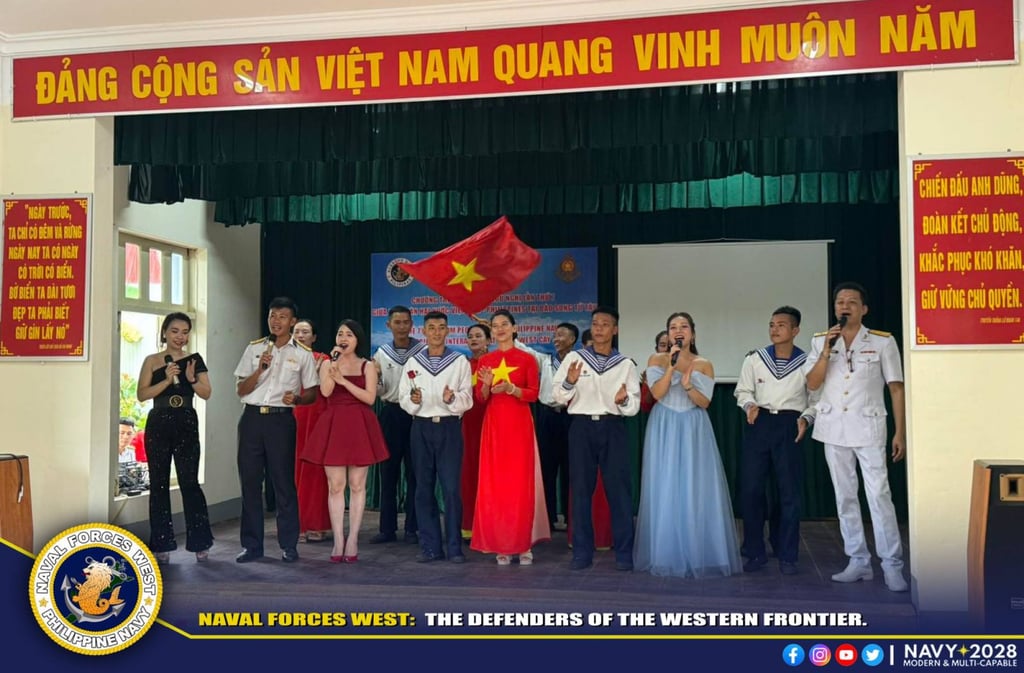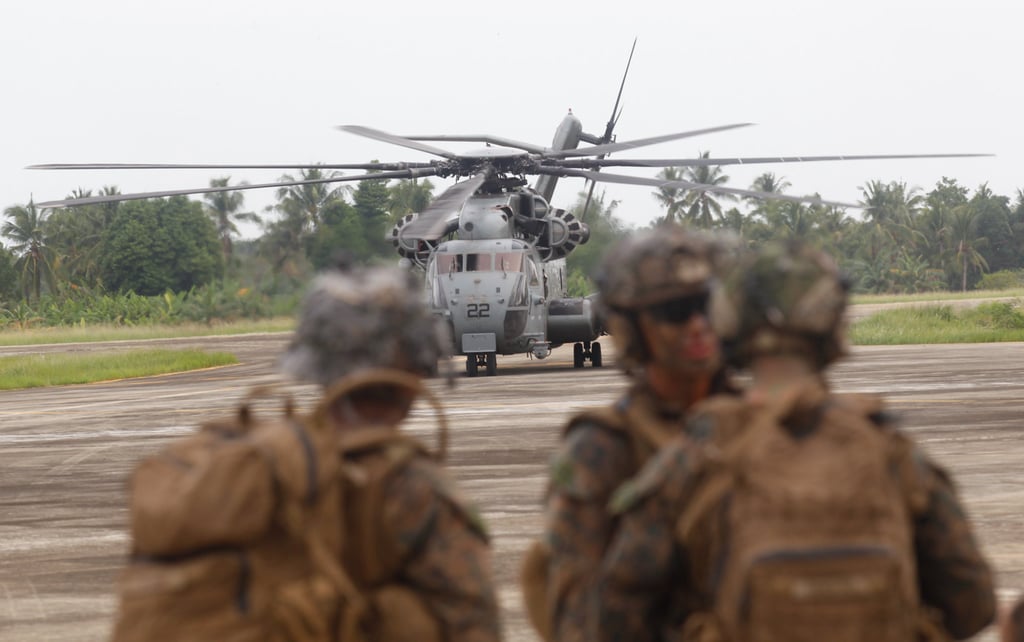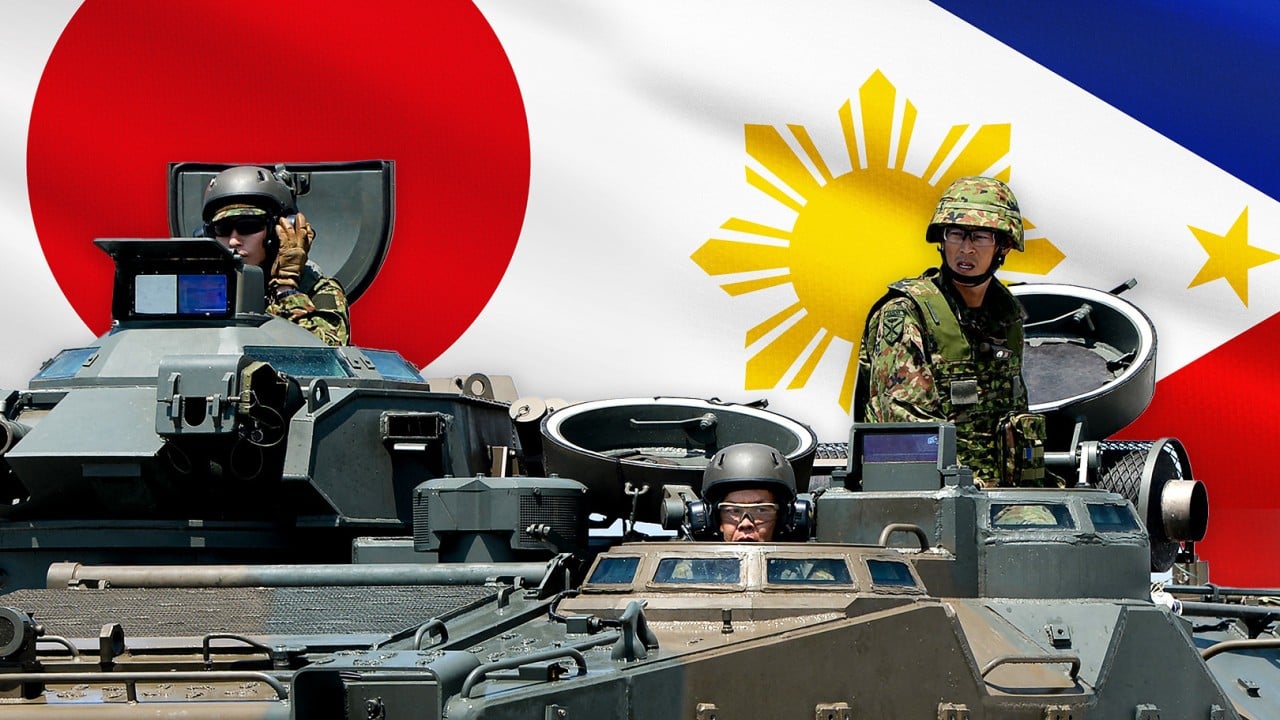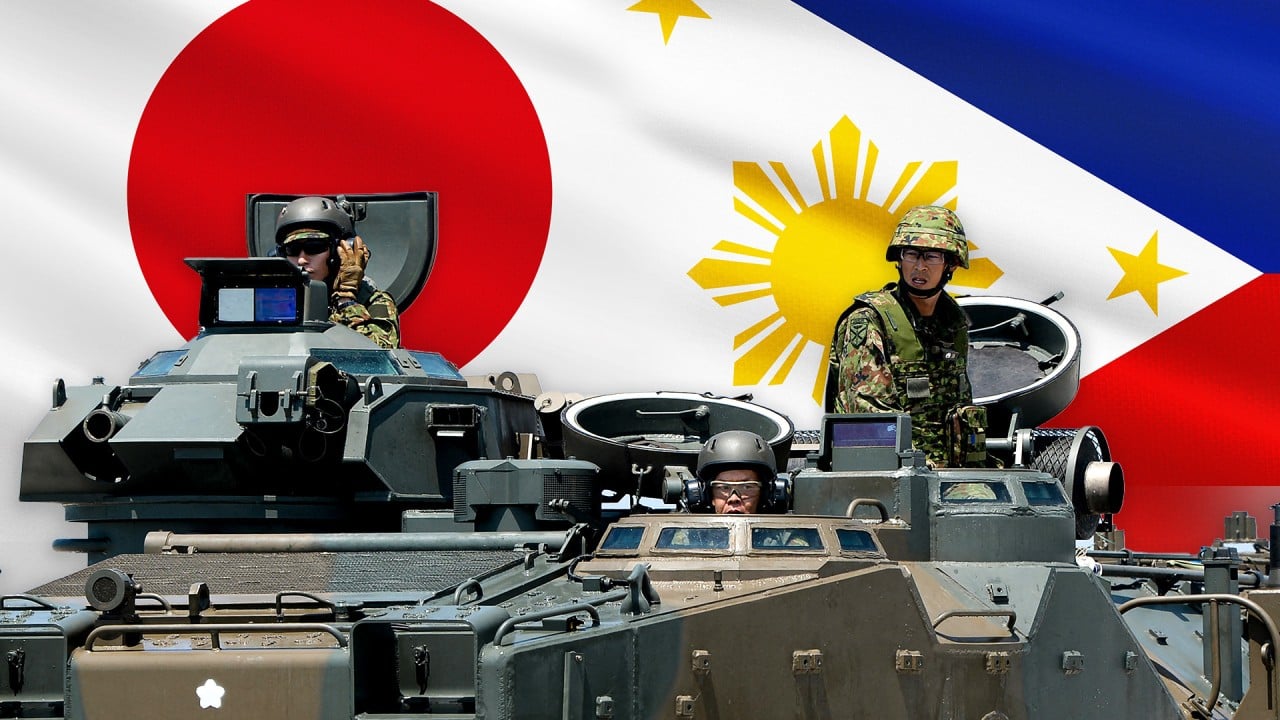US Secretary of State Antony Blinken and US Defence Secretary Lloyd Austin will meet their counterparts in the Philippines and Japan this week to discuss regional security issues, including security threats posed by Beijing in the Indo-Pacific.
The visit comes shortly after Manila and Tokyo signed a landmark defence pact, one of a number of recent security tie-ups between the Philippines and other countries that analysts believe Washington has helped to orchestrate in order to create a bulwark against Beijing’s growing influence on the region.
On Tuesday, Blinken and Austin will meet with Philippine Secretary of Foreign Affairs Enrique A. Manalo and Secretary of National Defense Gilberto Teodoro in Manila for the 2+2 Ministerial Dialogue, where they will discuss strengthening defence ties and the increasingly heated territorial disputes with Beijing in the South China Sea.
Before heading to Manila, the two senior US officials travelled to Tokyo to meet with Japanese Foreign Minister Yoko Kamikawa and Defence Minister Kihara Minoru to discuss a number of regional security issues and “continue to build on the momentum” of the US-Japan-Philippines trilateral cooperation, according to a US State Department press release.

Abdul Rahman Yaacob, a research fellow in the Southeast Asia Programme at the Lowy Institute based in Sydney, Australia, told This Week in Asia that the recently signed Reciprocal Access Agreement (RAA) between Manila and Tokyo was part of a broader regional trend in which the US brings like-minded partners together to work on common security issues.
On July 8, Teodoro and Kamikawa signed the RAA, enabling the two nations to jointly train troops and provide mutual aid during natural disasters. It will pave the way for larger military exercises between Filipino and Japanese troops.
“I believe to some extent, the US plays a role behind the scenes in bringing the Philippines and Japan together. Washington has brought South Korea and Japan together in Northeast Asia through the Trilateral Security Cooperation Framework. We also have Australia-Philippines-Japan-US, or as some call it ‘the Squad’,” Yaacob said.
“This is nothing new, as historically, the US has been active behind the scenes in setting up defence and security cooperation arrangements in Southeast Asia. Even during the 1960s and early 1970s, Washington’s involvement in the planning stage made the Five Power Defense Arrangements a reality,” he added, referring to the multilateral defence agreements made between Australia, Malaysia, New Zealand, Singapore, and the United Kingdom following Britain’s withdrawal from Southeast Asia.
Asked whether Washington is using the Philippines as its bulwark against Beijing in the Indo-Pacific, Yaacob said the phrase “using the Philippines” inaccurate, arguing instead that there is a “strategic convergence” between Washington and Manila.
“The former is trying to check China’s growing influence and potential military threat in the Indo-Pacific region, while the latter is concerned about its overlapping maritime claim with Beijing. Both see China as a security concern from different perspectives. China’s assertive and aggressive behaviour against the Philippines does help Beijing’s case. In fact, these behaviours pushed Manila to seek closer relations with Washington,” Yaacob said

Manila and Beijing have been locked in an increasingly contentious territorial row in the South China Sea for several months, with the latest skirmish on June 17 between the Philippine navy and Chinese coastguard taking place at the disputed Second Thomas Shoal. Many analysts consider the clash a turning point in the escalating conflict, as it resulted in several Filipino sailors being injured, with one suffering a severed thumb.
Yaacob explained that while the US government is competing with China for dominance in the South China Sea, Washington is also pushing its allies to strengthen their defences because its military is overstretched and other embattled allies are also competing for their weapons and arms supplies.
“States in the Indo-Pacific have to compete with Ukraine and Israel for attention. The war in Ukraine and its impact on Europe is a lesson for the Indo-Pacific region. One lesson is that Indo-Pacific states with common security interests should join together and share resources, and they should rely less on the US,” said Yaacob.
“In terms of numbers, China has the largest navy in the world. Along with its economic strength, China poses a great challenge to the US hegemony in the Indo-Pacific region. It is difficult for the US to confront China on its own while at the same time focusing and providing material assistance to Europe and Israel,” he explained.
Broad coalition
In addition to its RAA with Japan, the Philippines has increased security ties with a number of other countries recently and announced that it is working on making similar agreements with even more.
“We are going to work on an RAA hopefully with Canada, with France, (also) with New Zealand and with other countries that escaped my memory,” Defence Secretary Teodoro said in a TV interview on July 22.
Besides the potential RAA, France recently included the Philippines in its annual Indo-Pacific air force mission, Pegase 24, which Manila’s Department of National Defence hailed as “a first in the history of Philippine-France defence relations”.
The Philippine and Vietnam coastguards also recently announced they are in talks to hold their first-ever joint drills, despite their overlapping claims in the South China Sea.

Last week, Teodoro also signed a memorandum of understanding with his counterpart in Singapore, Ng Eng Hen, to “foster closer people-to-people links” and build on an existing agreement on education, training aid and support activities for humanitarian assistance and disaster relief, according to a statement from the Singapore’s defence ministry.
Chester Cabalza, president of the Manila-based International Development and Security Cooperation, said the orchestration of new and similar RAA with New Zealand, France and Canada next year arises from the pattern originally crafted and implemented by the US with the Philippines, followed by Australia and Japan.
“These countries are all allies of Washington that share democratic values and strategic visions of a free and open Indo-Pacific region,” Cabalza said.
“The visit of the two top American leaders in Manila is a reassurance of its defence commitments with its oldest treaty ally in Asia amid uncertainties in the ongoing colourful US election,” he added.
Washington, according to Cabalza, has become a protectionist superpower, striving to maintain its presence in the Indo-Pacific region while also maintaining its role as the world’s policeman in the Baltic region and the Middle East.
“Despite its complex security anxieties and economic headwinds, Washington still tries to fulfil its obligations. However, this should be a guiding principle for a middle power like Manila to build more cooperation with the allies of the US,” Cabalza said.
Twofold anxiety
Matteo Piasentini, a security analyst from the China and Indo-Pacific desk at Geopolitica, an Italian think tank, disagreed with the view that Manila is being “orchestrated” by the US into entering security agreements with other countries.
“We saw in the case of the RAA with Japan, it is the result of more than a decade of enhanced and deepened ties, as well as convergence in security interests. The fact that these countries are also ‘like-minded’ in upholding freedom and openness in the Indo-Pacific does not necessarily make them proxies of the US,” Piasentini told This Week in Asia.

“The US may welcome these initiatives as synergistic with their strategies, but thinking that a state like Japan is ‘pushed‘’ to do such agreements is simplistic and misleading. Japan’s strategic thought is rooted in decades of policymaking,” he added.
Some have suggested that Manila is seeking out these defence pacts because it has doubts about whether the US will come to its aid should its conflict with China continue to escalate.
However, Piasentini said agreements like the RAA with Japan cannot be considered a replacement for a reluctant US, since they do not contain reciprocal commitments on mutual defence like Manila has with Washington.
In 1951, the Philippines and the US signed a Mutual Defence Treaty that calls on both countries to aid each other in times of aggression by an external power. US officials including have reiterated their commitment to the MDT multiple times in recent years, with President Joe Biden calling it “ironclad”.
But according to Piasentini, Manila is still grappling with the twofold anxiety of being treated like a proxy of the US and being abandoned by the US at the same time.
“Sure, nothing is definitive nor written in stone, which is why Manila has to bear the cost of dealing with the powerful patron, the US. But since 2019, both former US President Donald Trump and the Biden administrations reaffirmed that the MDT applies to the South China Sea,” Piasentini said.
According to him, what Manila needs to do to counter China’s aggressive actions in the disputed waters is enhance its military and deterrence capabilities, which is why it is entering these military pacts – to strengthen their capabilities and learn from other armed forces.
“But these states have no obligation to intervene in case of conflict, so I don’t think these agreements serve the purpose of alleviating Manila’s fear of abandonment,” he explained.
Considering its rising tensions with China, Piasentini said Manila has been thrust into the role of trying to establish a defence-security network in the region.
“As a state that perceives an immediate threat to its borders, the Philippines is doing what it can diplomatically to deepen military ties with essentially whoever is interested. I believe it is also a reaction triggered by a latent dissatisfaction with how Asean is currently paralysed. We shouldn’t forget though that these agreements are relatively cost-free and contain loose commitments by the parties,” Piasentini stressed.



